1Which of the following correctly lists the three fundamenta
1-Which of the following correctly lists the three fundamental economic questions?
a)If to produce? Why to produce? When to produce?
b)If to produce? What to produce? How to produce?
c)Why to produce? What to produce? How to produce?
d)What to produce? How to produce? For whom to produce?
2-Which fundamental economic question is most closely related to the issue of income distribution and poverty?
a)The What to Produce question
b)The Why to Produce question
c)The How to Produce question
The For Whom to produce question
3-Which fundamental economic question requires society to choose the technological and resource mix used to produce goods?
a)The What to Produce question
b)The Why to Produce question
c)The How to produce question
d)The For Whom to Produce question
4-The opportunity cost to a city for using local tax revenues to construct a park is the:
a)The best alternative forgone by building the park
b)Dollar cost of constructing the new park
c)Dollar cost of the old park
5-Which of the following does not illustrate opportunity cost?
a)If I study, I must give up going to the football game
b)If I buy a computer, I must do without a 35’’ television
c)If I spend more on clothes, I must spend less on food
d)All of the above illustrate opportunity cost
6-Bill has $10 to spend on a Superman, Batman, or an X-men t-shirt. Bill buys the Superman T shirt and the Batman shirt was a close second choice. What is the opportunity cost?
a)The amount he spends, $10
b)Nothing, since he got his preferred choice
c)The Batman T-shirt
d)The X-man T-shirt
7-A source of economic growth is
a)Unemployment
b)Inefficiency
c)Less resources
d)Greater entrepreneurship
8-The process of accumulating capital is called:
a)Capitalization
b)Loanable funds
c)Investment
d)Debt management
9-A nation can accelerate its economic growth by:
a)Reducing the number of immigrants into the country
b)Adding to its capital stock
c)Printing more money
d)Imposing tariffs and quotas on imported goods
10-Which of the following cause(s) economic growth?
a)C and D
b)D and E
c)The production of more scare goods
d)A technological improvement
e)The production of more capital goods
11-Efficient production means producing:
a)Less than feasible output for a given amount of resources
b)More than feasible output for a given amount of resources
c)The maximum feasible output for a given amount of resources
d)No more than what is needed
12-The economic system that Answers the What, How and For Whom questions the way they have always been answered is a:
a)Market economy
b)Command economy
c)Soviet economy
d)Traditional economy
13-The economic system that answers the What, How and For Whom questions by central authority is a:
a)Market economy
b)Command economy
c)Traditional economy
d)Any of the above
14-The economic system that answers the What, How and For Whom questions using prices determined by the interaction of supply and demand is:
a)Market economy
b)Command economy
c)Soviet economy
d)Traditional economy
15-An economic system is the organizations and methods used to determine:
a)What goods and services are produced
b)How goods and services are produced
c)For Whom goods and services are produced
d)All of the above
16-Which of the following societies is the most likely to have a traditional economy?
a)The United States of America
b)The Inuit(native people of Northern Canada)
c)Cuba under Castro’s rule
d)Modern day Hong Kong
17-In a market economy, buyers and sellers communicate their intentions to one another through:
a)Government planners
b)Negotiation overseen by government agencies
c)Elected officials
d)Prices
18-Under socialism, factories, farms, mines and natural resources are owned by:
a)Government
b)Private stockholders
c)No one
d)laborers
19-Which of the following is a characteristic of socialism?
a)Rejection of central planning
b)Government ownership of all factors of production
c)Government ownership of most factors of production
d)Private ownership of all factors of production
20-Which of the following is a common criticism of capitalism?
a)Poor product quality and little product diversity
b)Inefficiency of nationalized industries
c)Inability to adjust quickly to changing economic conditions
d)Inadequate environmental protection.
21-If the price of tea is below the equilibrium level, then
a)The demand for tea will decrease
b)The market for tea has cleared
c)Sellers will be stuck with unsold tea
d)There is a shortage of tea
22-The use of the price system tends to eliminate
a)Scarcity
b)Equilibrium
c)Shortages and surpluses
d)Changes in supply and demand
23-According to the law of supply, there is a direct relationship between the quantity supplied of a good and the
a)Price of the good
b)Number of sellers
c)Technology used to produce the good
d)Cost of resources
24-Which of the following would lower both the equilibrium price and the equilibrium quantity of strawberries?
a)A decrease in the demand for strawberries
b)An increase in the demand for strawberries
c)A decrease in the supply of strawberries
d)An increase in the supply of strawberries
25-A rise in the price of a good causes a decrease in its
a)Quantity demanded
b)Demand
c)Quantity supplied
d)Supply.
Solution
1) Which of the following correctly lists the three fundamental economic questions?
Solution: What to produce? How to produce? For whom to produce?
Explanation: Three fundamental economic questions are what to produce, how to produce and for whom to produce?
2) Which fundamental economic question is most closely related to the issue of income distribution and poverty?
Solution: The For Whom to produce question
Explanation: For Whom to produce question relates to distribution of income
3) Which fundamental economic question requires society to choose the technological and resource mix used to produce goods?
Solution: The How to produce question
Explanation:
4) The opportunity cost to a city for using local tax revenues to construct a park is the
Solution: best alternative foregone by building the park
Explanation: Opportunity cost is the loss of other alternatives when one alternative is chosen
5) Which of the following does not illustrate opportunity cost?
Solution: All of these illustrate opportunity cost
Explanation: Opportunity cost is the loss of other alternatives when one alternative is chosen
6) Bill has $10 to spend on a Superman, Batman, or an X-men t-shirt. Bill buys the Superman T shirt and the Batman shirt was a close second choice. What is the opportunity cost?
Solution: The Batman T-shirt
Explanation: Opportunity cost is the loss of other alternatives when one alternative is chosen
7) A source of economic growth is
Solution: Greater entrepreneurship
Explanation: Entrepreneurship is most vital to economic development
8) The process of accumulating capital is called:
Solution: Investment
Explanation: Investment refers to capital accumulation
As per norms we can answer first four questions
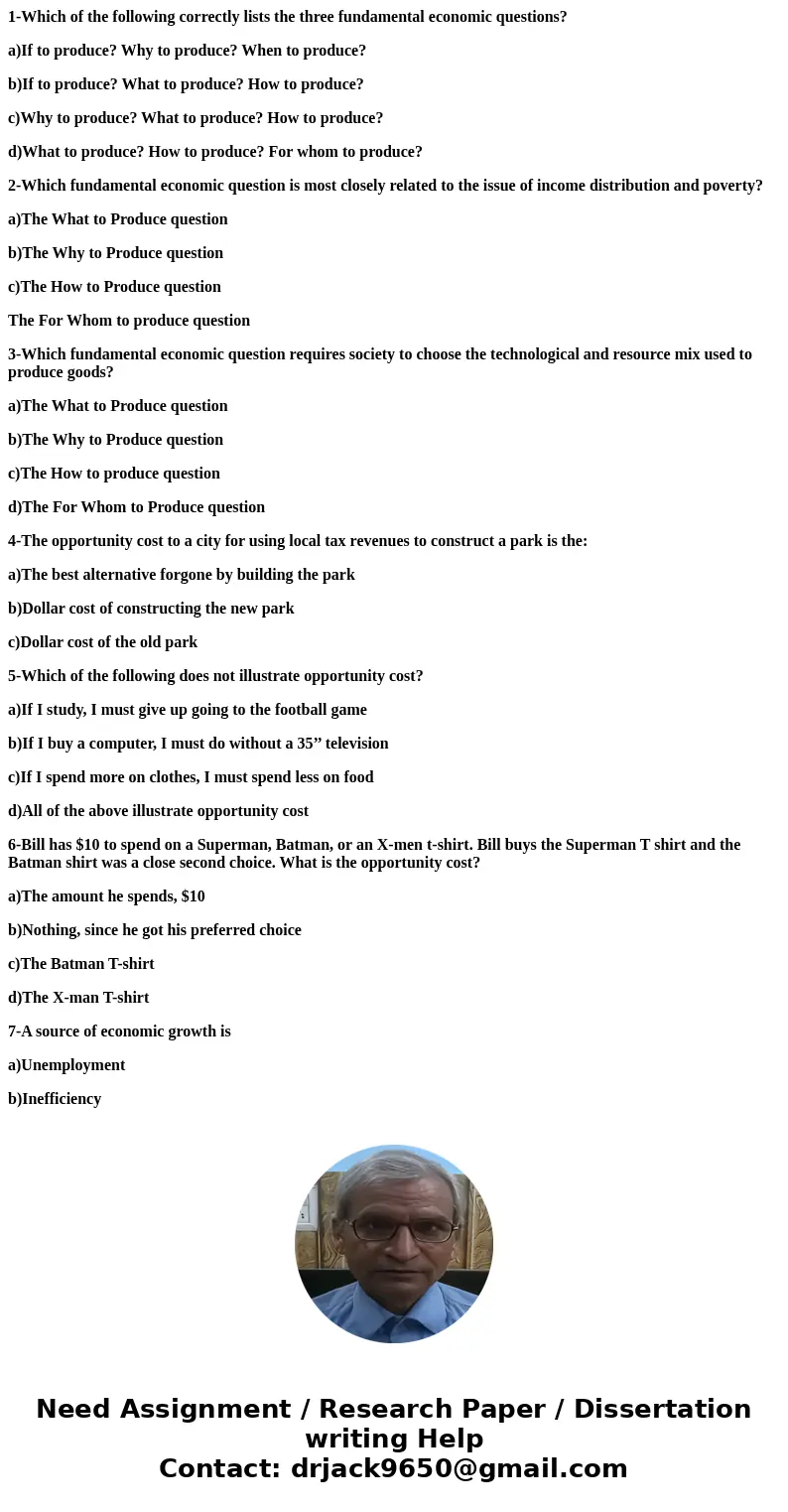
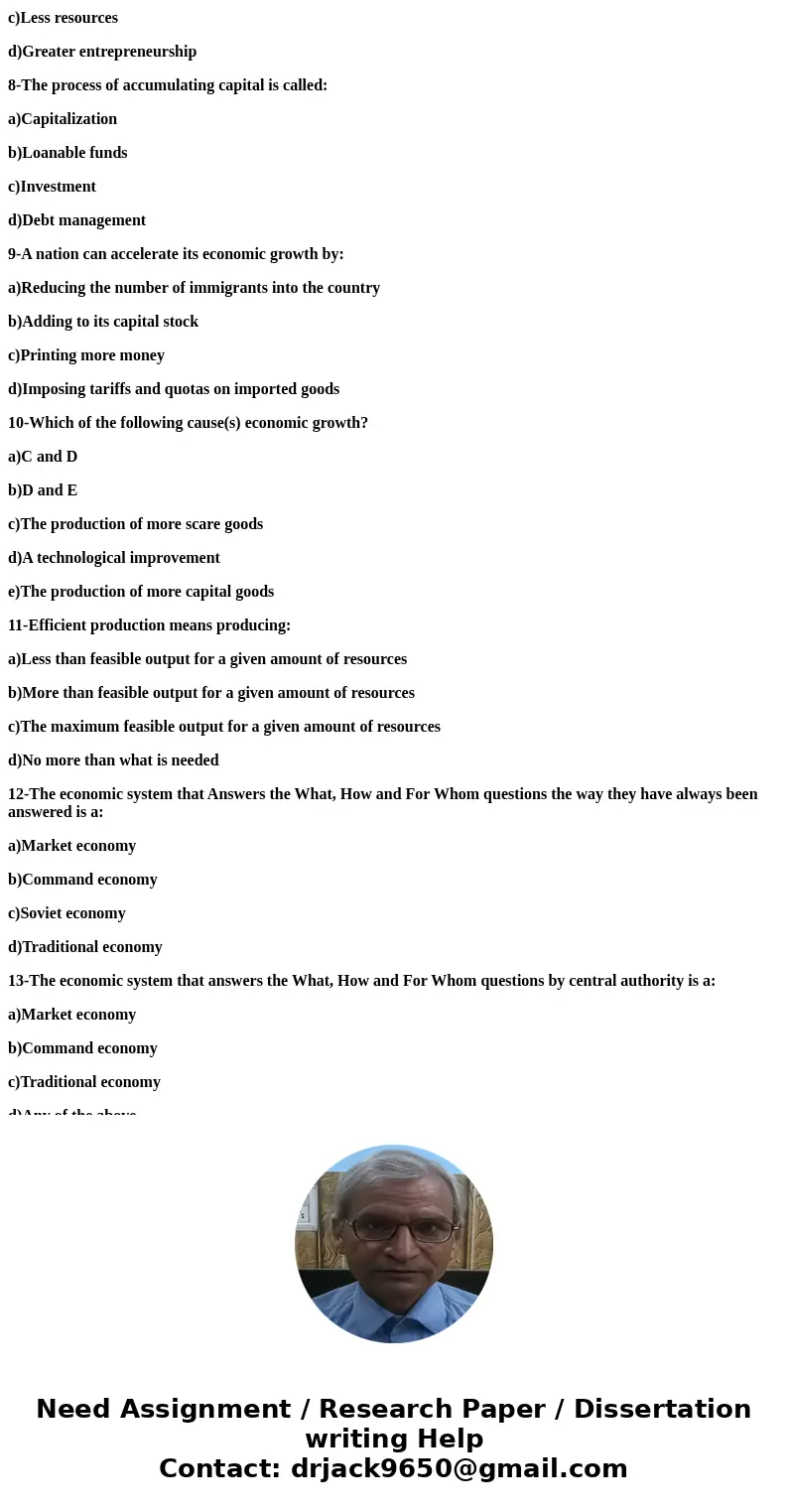
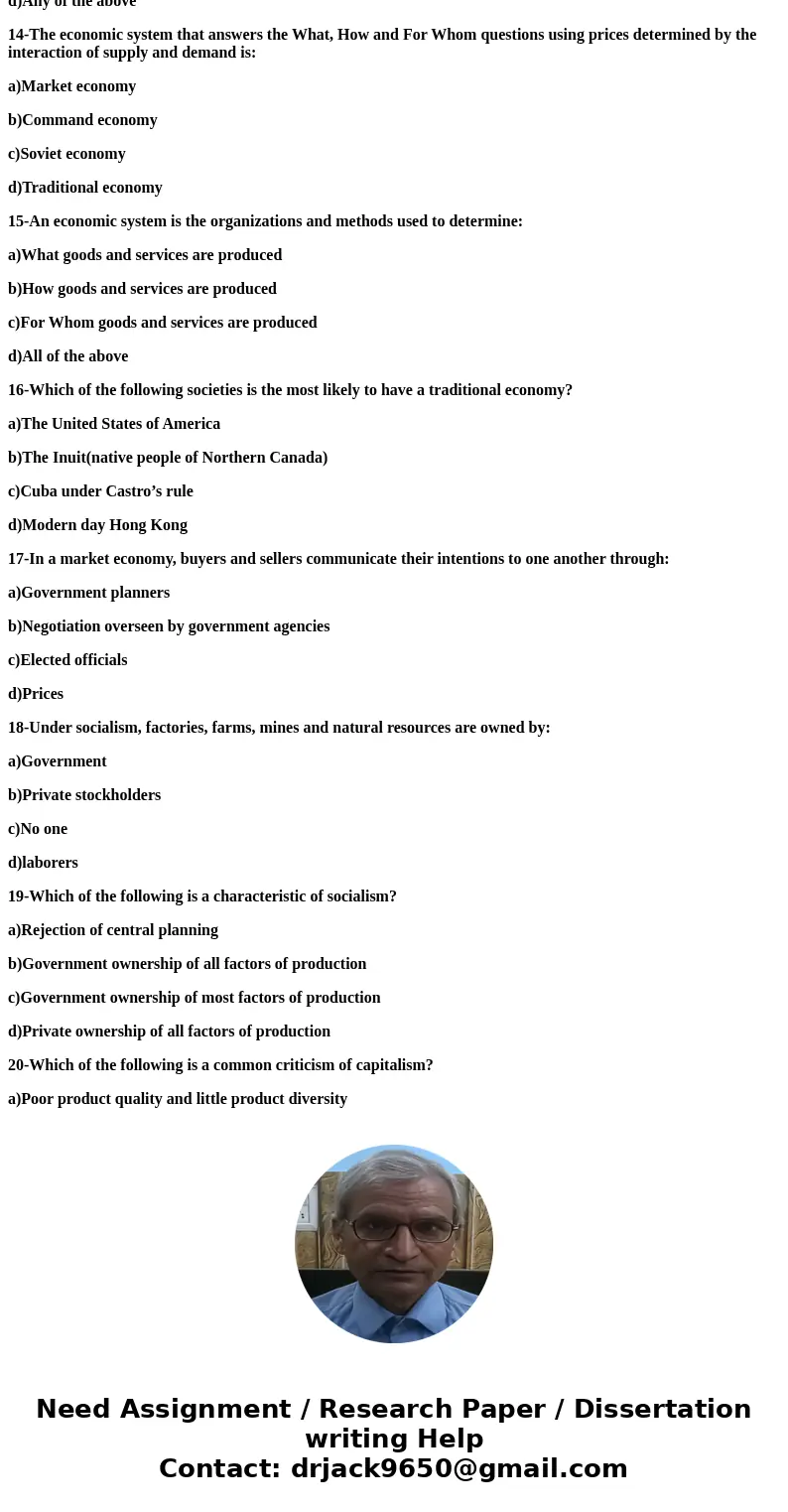
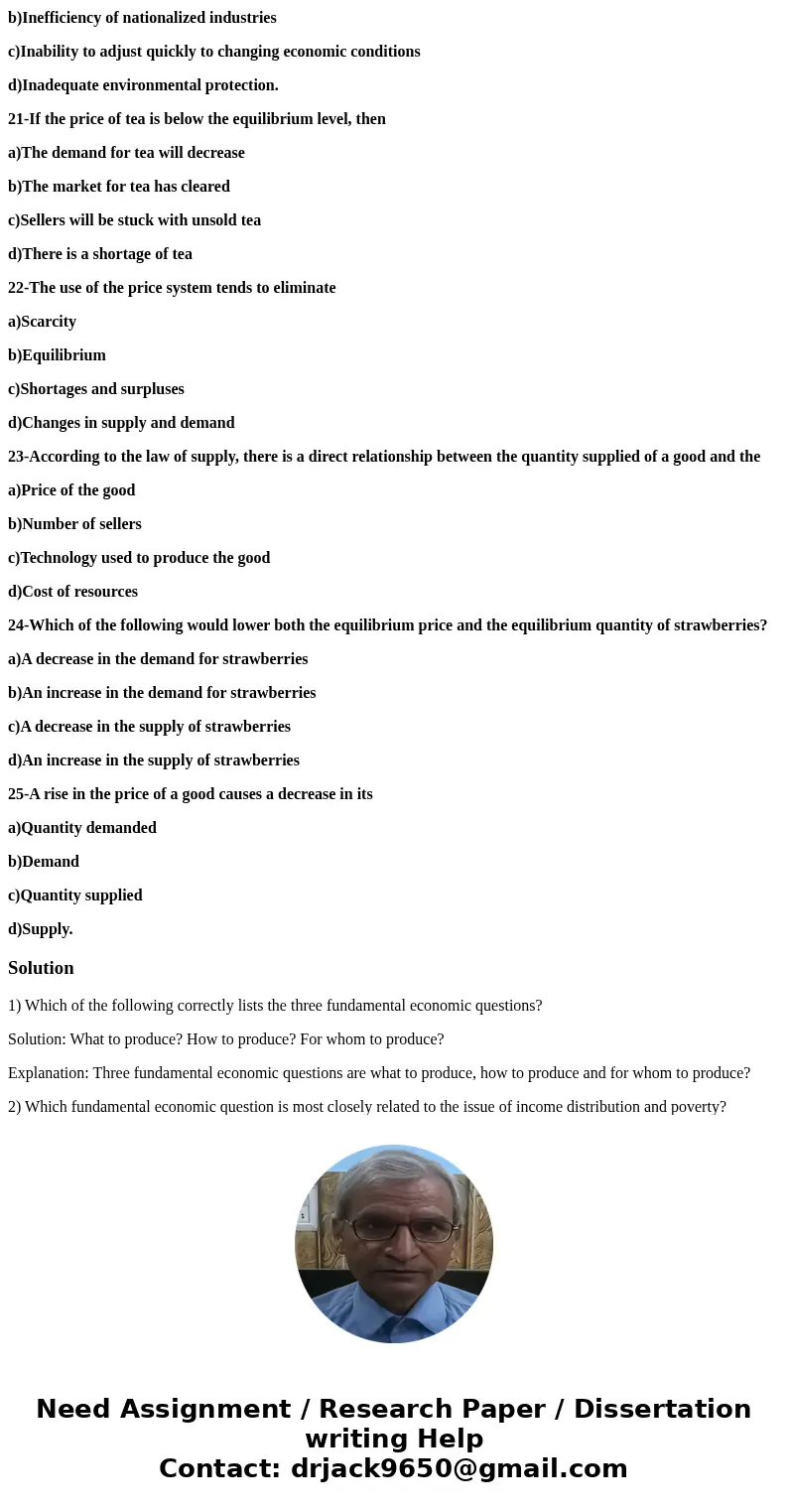
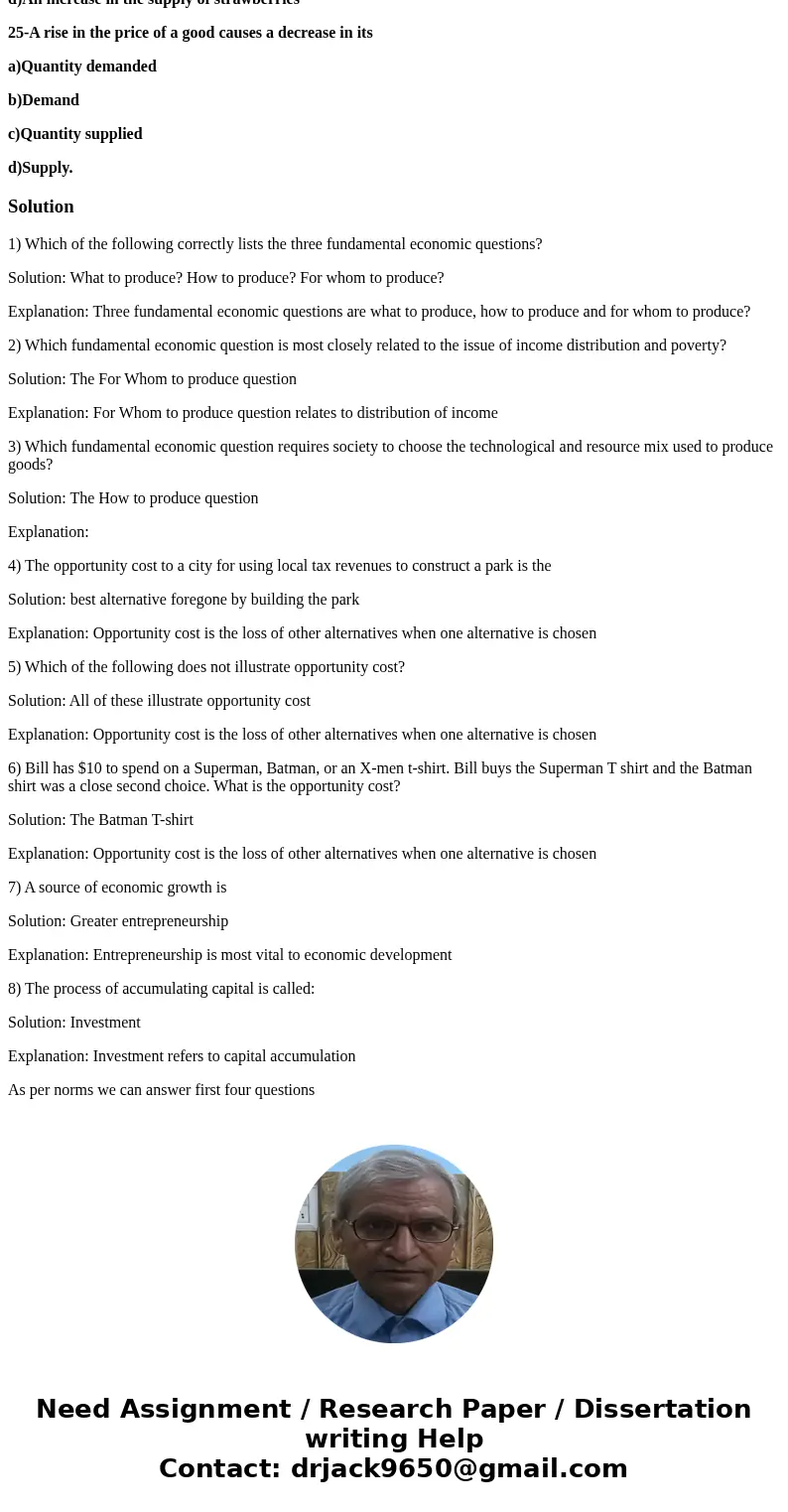
 Homework Sourse
Homework Sourse